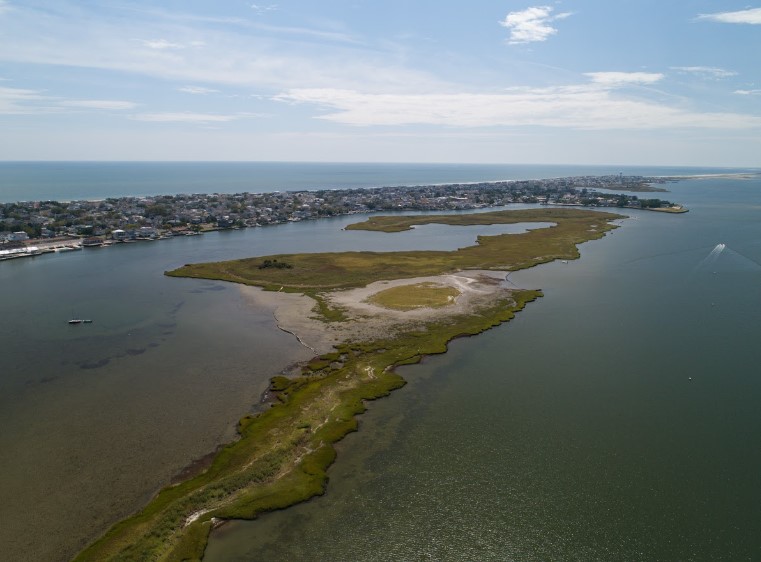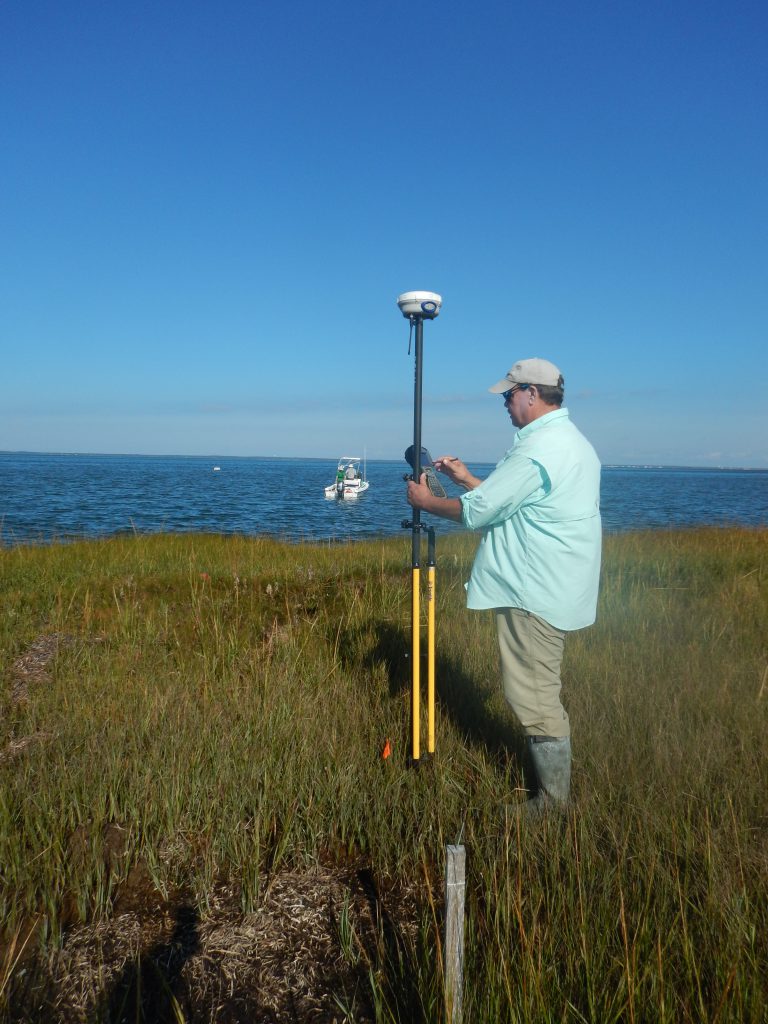
NCCOS scientists have released the results of a three-year monitoring effort designed to evaluate the success of recent restoration efforts involving the use of dredged sediments to create intertidal habitat at Mordecai Island, New Jersey. The report documents implications of the restoration activity on the long term resilience of Mordecai Island, and provides insight into the potential benefits associated with the beneficial use of sediments in estuarine settings.

Mordecai is an undeveloped island that runs parallel to the Barnegat Bay shoreline of Beach Haven, New Jersey. In addition to providing habitat for a wide range of estuarine organisms and nesting shorebirds, the island protects the adjacent developed shoreline from the erosive action of waves. Over the past century, persistent wave action in the region has resulted in a loss of roughly 50 percent of the island’s total area, effectively separating the island into two lobes.
In 2015, the U.S. Army Corps of Engineers (USACE) Engineering With Nature (EWN®) initiative and the Philadelphia District of USACE used approximately 30,000 cubic yards of dredged sediments to restore Mordecai Island and join the two lobes back together. Scientists from the NCCOS then documented sediment and soil characteristics, erosion rates and biological communities within the sediment placement region and in undisturbed inter‐ and subtidal regions of Mordecai Island from 2017 – 2019.
Navigation channels across the country require regular dredging to avoid infilling with sediments and becoming impassable. In most cases, the sediments that are dredged from navigation channels are disposed of in the open ocean or in upland containment facilities. The recognition that many coastal wetlands are suffering from the cumulative impacts of erosion and sea level rise has fueled an interest in the “beneficial use” of these dredged sediments as a means of sustaining these valuable habitats and enhancing coastal resilience. Pairing navigation dredging projects with habitat restoration efforts can increase habitat quality and save on traditional dredge disposal costs.
Despite the opportunities, these strategies have yet to be embraced widely by practitioners and regulators due to uncertainties about the long‐term performance of these habitats relative to more traditional engineered solutions. The data provided in this report partially address that knowledge gap by providing the baseline against which to evaluate the success of beneficial use at Mordecai Island.
This project supports the USACE EWN® Program philosophy of leveraging natural processes to achieve a broader suite of engineering, environmental and socio-economic benefits. For more information, visit the project page, or view the project story map.
Citation: Davis, J. L., Balthis, W. L., Greene, M. D., Giannelli, R. A. 2020. Ecological Assessment of the Beneficial Use of Dredged Sediments for Island Restoration: Mordecai Island, Barnegat Bay, NJ. NOAA Technical Memorandum NOS NCCOS 287, Silver Spring, MD. 52 pp. doi:10.25923/gja6-a224
